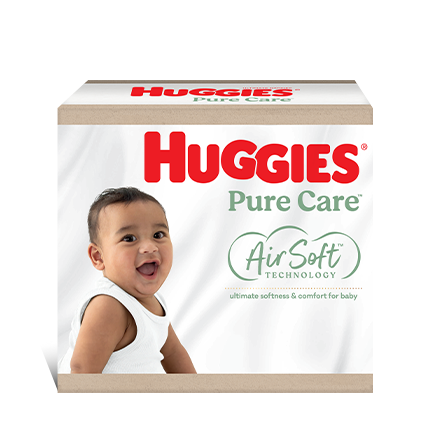Stay simple and start slowly
When you introduce signing to your baby, gradually introduce the signs one at a time. It is recommended to begin with approximately five words and once your baby has begun to respond to those words, you can introduce more. Sign language can be a slow process depending on the age of your baby when you begin. A six-month-old who is introduced to signing may begin signing back to you anywhere from one month to six months later; it simply depends on each individual child.
Be patient
Every parent has the ability to teach his or her baby sign language. A major downfall for some parents is their lack of patience. Signing is not something that will happen overnight, it is a relatively slow process depending on each individual baby. Do not be discouraged. Your baby is learning from you and will, when the time is right, let you know that they understand through signing. This learning process introduces invaluable interaction with your baby. Do not give up whatever you do. Be patient and reap the rewards of sign language.
Be consistent
Once you have decided on your initial five words, be consistent in using them with your baby. For example, if you are using the sign ‘milk’ with your baby and introduce this sign when you are feeding your baby, be sure to continue to use it every time you feed your baby. If you only use this sign now and again, your baby is less likely to understand that this sign represents ‘milk’. They may think it is simply a game you are playing with them. The key here is to incorporate sign into your everyday life. Each time you use the word ‘milk’, develop an automatic reaction to sign and say the word out loud. Repetition is the key to success.
Sign on your baby’s level
When you interact with your baby, it is important that you are on their level. Keep your facial expressions and signs within their field of vision. This ensures that your baby is seeing the correct way to sign the word. By signing at an angle to your baby, your baby’s view of your sign may be totally different to the one that you are attempting to create.
Use baby sign language in context
When teaching baby sign language, it is important to relate the word to the current situation or feeling of the moment. There is no point in attempting to introduce your baby to a sign when that particular sign represents something that has happened in the past. For example, if you go for a walk with your baby and see a dog on your walk, there is no point on the following day, in signing the word ‘dog’ and saying “Remember the dog we saw yesterday in the park.” Australian Baby Hands recommends finding as many situations as possible, in the present time, to use the sign that you are attempting to teach. For instance, use the sign for ‘dog’ as you read a story about a dog, watch a dog on television or point at your family pet.
Always use the sign and the spoken word together
Ensure that each time you sign a word; you accompany it with the spoken word. This enables your child to make the connection between the two more quickly.
Use motivating signs
It is important when choosing your initial words that you use a combination of ‘practical’ words and ‘motivating’ words.
‘Practical’ words highlight words that will make you and your baby’s life easier once sign language is in use in your home. These words are more general words and include words such as eat, drink, change, pain, sleep etc.
It is important to balance these words with words that are motivating or interesting to your baby. ‘Motivating’ words may include words such as teddy bear, ball, play etc. These are specific things that your baby may have shown an interest in.
Teach family members and caregivers
It is important to introduce the signs you are using with your baby to people who are in contact with your baby on a regular basis. This will ensure consistency. The more your baby sees the signs, the sooner your baby will begin to sign back. Childcare facilities are slowly beginning to introduce signing to their day care so be sure to continually update them on what signs you are using with your baby.
Use an appropriate facial expression with a sign
This is especially important when teaching feelings or sensations to your child. Sign language is a very visual language and members of the deaf community use their face as part of the signing process. When expressing a feeling, allow your face to vividly illustrate the feeling. A feeling of happiness can be illustrated with a big smiling face while signing and saying the word. A feeling of fear can be illustrated with frowning eyebrows or a startled look. Some words do not require or do not have an obvious facial expression. To animate your face is initially a little strange for beginners to sign language. To practice, stand in front of a mirror and see if you would know from your facial expression what word you are trying to sign. Remember you are better to over-express than under-express your signs with your face.
Encourage your baby’s attempts
When your baby begins to sign, they probably will not initially get the sign 100% correct. It is important though to praise them for their efforts and repeat the sign correctly back to them. When the child is showing you that they need something, give it to them, even if the sign is only approximately correct. They will begin to realise that it works!
Have fun!
Sign language is a beautiful visual language and not one to get stressed about. If you are stressed when signing, your baby will pick up on this. Signing should be fun for you and your baby. It should not feel like a chore but be a part of your everyday life. Relax, have fun and enjoy the benefits that this wonderful language can bring to you and your baby.
For more details go to Australian Baby Hands where you can register for you’re FREE chart of common signs.
Article written by Jackie Durnin:
Jackie Durnin is the Author of “Australian Baby Hands”, using Auslan, Australian Sign Language to communicate with your baby.
For further information contact
[email protected]
For more information see Baby sign language or Parenting .
Last Published* May, 2024
*Please note that the published date may not be the same as the date that the content was created and that information above may have changed since.




















